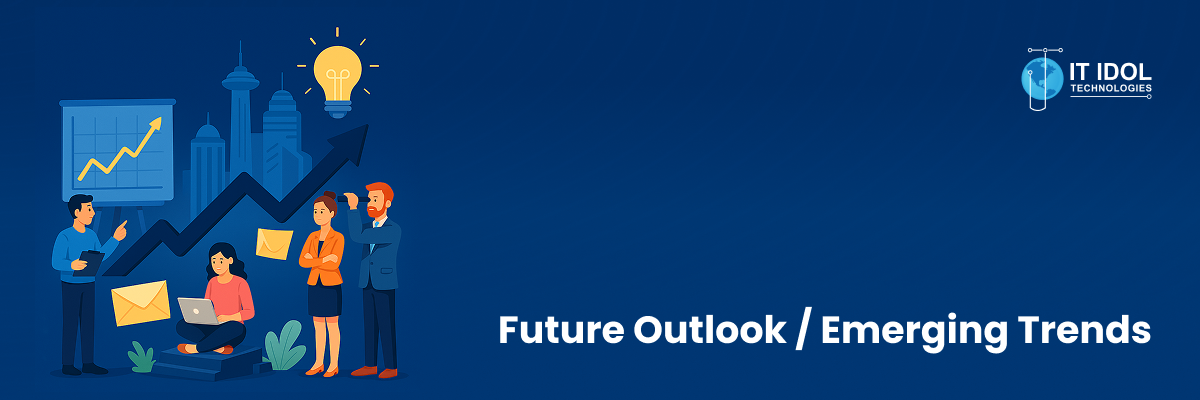The sale doesn’t end at checkout; it begins a new phase of customer experience that determines whether a buyer becomes loyal or leaves after one purchase. In e-commerce, return rates average 16.5% of total orders, according to the National Retail Federation, representing billions in lost revenue and logistics costs. Yet, a large percentage of these returns are avoidable, often triggered by unmet expectations, unclear communication, or poor post-purchase engagement.
Enter the post-purchase email sequence: the most underutilized retention and cost-control tool in modern e-commerce. Beyond order confirmations and shipping updates, these messages shape the customer’s confidence, clarify product usage, and even preempt dissatisfaction.
This article breaks down five high-impact post-purchase email types proven to reduce return rates and strengthen long-term loyalty. Backed by behavioral data, best practices, and real-world insights, these strategies demonstrate how thoughtful communication after the sale can drive measurable business outcomes.
The Current Landscape & Challenges
The surge in online shopping has amplified the complexity of returns management. According to a 2024 Shopify report, nearly 60% of consumers cite unclear product expectations as the main reason for returning an item. Compounding this issue, Gartner research indicates that only 37% of retailers have structured post-purchase communication beyond transactional emails.The result? Missed opportunities to reassure customers, educate them, and turn uncertainty into confidence. For SMEs and D2C brands, high return rates not only inflate operational costs but also distort inventory planning and margins.
Most e-commerce marketers still treat post-purchase communication as a logistics update, tracking links, invoices, and receipts. What’s missing is experience design: guiding the customer emotionally and practically through their journey after the “Buy” button.
Brands that master this stage see quantifiable results. A Forrester analysis found that proactive post-purchase engagement can reduce returns by up to 25% while improving repeat purchase intent by 32%.
The challenge now isn’t awareness, it’s execution. Which emails actually move the needle, and how can they be scaled without sounding automated?
Core Insights & Frameworks
Below are five proven email types that don’t just inform customers, they transform how they feel about their purchase.
1. The Confidence-Builder: Order Confirmation + Product Expectations
This email sets the emotional tone. Beyond confirming the transaction, use it to clarify what’s coming next, delivery timelines, key product features, and realistic use expectations. Include a short “Getting Started” visual or video link.
📈 Why it matters: According to Salesforce, clear expectation-setting at checkout and confirmation reduces “buyer’s remorse”-driven returns by 12–15%.
✅ Takeaway: Treat order confirmations as the start of onboarding, not a receipt.
2. The How-To Guide: Setup or First-Use Instructional Email
Once the product arrives, confusion is the fastest route to dissatisfaction. A how-to email delivered 24 hours post-delivery should provide setup steps, troubleshooting FAQs, and short tutorial clips.
🧩 Example: Dyson’s “Unbox & Power Up” email includes a 45-second setup video and quick cleaning tips. According to HubSpot, such educational content reduces return-related support tickets by up to 20%.
✅ Takeaway: Empower users with clarity before frustration sets in.
3. The Validation Email: Customer Check-In & Support Prompt
Sent three to five days after delivery, this email’s purpose is reassurance. Use empathetic language, “How’s your experience so far?” and include a one-click link to support or chat.
💬 Data Insight: A Zendesk study shows that 72% of consumers who received a proactive support check-in were less likely to return their purchase.
✅ Takeaway: Ask early, assist fast before dissatisfaction escalates into a return.
4. The Social Proof Loop: Customer Education + Community Highlights
Post-purchase isn’t just about retention, it’s about belonging. Share customer stories, tutorials, or usage ideas that validate the buyer’s decision. This email can highlight community engagement, user photos, or social rewards.
📊 Case Example: According to Statista, 41% of buyers feel more confident about keeping a product after seeing real user validation.
✅ Takeaway: Turn uncertainty into pride by showcasing authentic post-purchase narratives.
5. The Preventive Reminder: Maintenance, Refill, or Upsell Trigger
For consumables or wearables, timing reminders smartly can prevent product misuse or abandonment. Send maintenance tips or replenishment nudges based on purchase lifecycle data.
💡 Insight: McKinsey reports that lifecycle-driven retention emails can increase customer lifetime value by up to 30% while decreasing product misuse-related returns.
✅ Takeaway: Personalize retention by aligning with product life, not just purchase date.
Future Outlook / Emerging Trends
The next wave of post-purchase engagement will be AI-driven personalization. Advanced segmentation and predictive models will soon determine which customers are most likely to return items and trigger preventive communication accordingly.
Gartner forecasts that by 2026, over 60% of e-commerce interactions will be proactively personalized using behavioral and contextual data. This means brands that leverage AI to monitor satisfaction signals like delayed activation, negative sentiment, or return intent will stay ahead.
Moreover, sustainability pressures are reshaping return policies. Expect to see eco-nudges in post-purchase emails that educate customers on recycling, repairs, and donation alternatives, reducing environmental and financial costs simultaneously.
The brands that win won’t just automate, they’ll empathize, personalizing care at scale.
Actionable Takeaways / Mini Framework
Here’s a quick five-step framework to reduce returns through post-purchase engagement:
1. Clarify expectations — Set accurate delivery and usage details.
2. Educate early — Provide onboarding help within 24 hours of delivery.
3. Check in — Identify and resolve dissatisfaction quickly.
4. Validate socially — Reinforce decisions through community and proof.
5. Sustain engagement — Use data-driven reminders to nurture ongoing use.
When combined, these steps create a customer assurance loop that builds trust, minimizes regret, and extends lifetime value far beyond a single transaction.
Conclusion
Reducing returns isn’t about restrictive policies; it’s about building confidence. Every email sent after purchase can either reassure or alienate your customer. The difference lies in intentional, empathetic communication that turns transparency into trust.
Marketers who master post-purchase engagement move from reactive cost control to proactive experience design. Start by mapping your current sequence, identifying gaps, and testing one of the five strategies above.
Your next conversion opportunity isn’t in acquisition, it’s in what happens after the sale.
👉 Explore how personalized post-purchase journeys can improve ROI and retention across your e-commerce funnel.
TL;DR
Five data-driven post-purchase emails, confirmation, how-to, check-in, social proof, and lifecycle reminder can reduce return rates by up to 25%. Focus on reassurance, education, and engagement to build lasting trust and retention.
FAQs
1. What are post-purchase emails?
Post-purchase emails are communications sent after a transaction to confirm, guide, or engage the customer, enhancing satisfaction and reducing returns.
2. How do post-purchase emails reduce returns?
They clarify expectations, resolve confusion, and build confidence, key factors that minimize remorse-based returns. (Source: Forrester)
3. Which post-purchase email performs best for reducing returns?
Instructional or “how-to” emails have the strongest correlation with reduced product dissatisfaction.
4. When should post-purchase emails be sent?
Start within 24 hours of order confirmation, continuing at key milestones (delivery, setup, follow-up).
5. How can AI improve post-purchase communication?
AI predicts which customers may churn or return, enabling proactive messaging. (Source: Gartner)
6. What metrics measure post-purchase success?
Monitor return rate changes, support tickets, repeat purchases, and NPS improvements.
7. Should post-purchase emails include upsells?
Yes, but only after the value is established. Start with guidance before introducing add-ons.
8. Do personalized post-purchase emails perform better?
Absolutely. Personalized sequences can increase engagement by 29%. (HubSpot)
9. How can post-purchase emails support sustainability goals?
Educate customers on product care, recycling, or repair to reduce waste.
10. What tools help automate post-purchase sequences?
Platforms like Klaviyo, HubSpot, and Omnisend support lifecycle-based automation with analytics and segmentation.


